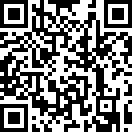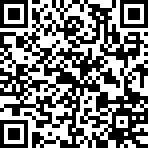 |
Research Article
Perioperative care in COVID-19 patients requiring emergency surgical procedures: A systematic review
1 Final Year Student, College of Medicine, University of Ibadan, Ibadan, Oyo State, Nigeria
2 Consultant Orthopaedic Surgeon, Department of Orthopaedic Surgery, University College Hospital, Ibadan, Oyo State, Nigeria
Address correspondence to:
Olubunmi Emmanuel Odeyemi
College of Medicine, University of Ibadan, Ibadan, Oyo State,
Nigeria
Message to Corresponding Author
Article ID: 100044S05OO2020
Access full text article on other devices

Access PDF of article on other devices

How to cite this article
Odeyemi OE, Eyitayo JO, Oyesiji EM, Balogun M. Perioperative care in COVID-19 patients requiring emergency surgical procedures: A systematic review. Edorium J Surg 2020;7:100044S05OO2020.ABSTRACT
Aims: The novel coronavirus infection (COVID-19) was first discovered in Wuhan, Hubei province, China and has spread to various continents of the world. This pandemic has beyond doubt affected patient care as reallocation of resources to the care of COVID-19 patients is now the order of the day.
Methods: We conducted a systematic review to identify demands of conducting surgical procedures during the COVID-19 pandemic. Our search strategy involved using the following databases: PubMed, MEDLINE, Google Scholar, and other medical databases. The search terms were “COVID-19,” “surgery,” “COVID-19 and Surgery.” Titles and abstracts of articles available in English were examined. The identified full texts were screened for original data, and related references were retrieved and checked for relevancy based on the inclusion criteria.
Results: Studies that met the inclusion criteria were thoroughly reviewed. We gathered that COVID-19 has greatly impacted the perioperative management of patients requiring emergency procedure during the pandemic. Preoperatively, venues and materials needed for surgery, including surgical personnel have been defined. There is also significant impact on intraoperative activities including ventilation of the patient, use of some equipment that could cause aerosol generation, and also postoperative care of the COVID-19 patient.
Conclusion: This study provides a framework for navigating through the muddy waters of performing surgery on COVID-19 infected patients, with emphasis placed on the prevention of cross-transmission in the hospital. All hands therefore must be on deck at every stage of management of COVID-19 infected patients.
Keywords: Anesthesia, COVID-19, Health care workers, Surgery, Transmission
SUPPORTING INFORMATION
Author Contributions:
Olubunmi Emmanuel Odeyemi - Substantial contributions to conception and design, Acquisition of data, Interpretation of data, Drafting the article, Revising it critically for important intellectual content, Final approval of the version to be published
James Oluwadara Eyitayo - Acquisition of data, Interpretation of data, Revising it critically for important intellectual content, Final approval of the version to be published
Emmanuel Moyinolu Oyesiji - Acquisition of data, Revising it critically for important intellectual content, Final approval of the version to be published
Mosi Balogun - Interpretation of data, Drafting the article, Revising it critically for important intellectual content, Final approval of the version to be published
Guaranter of SubmissionThe corresponding author is the guarantor of submission.
Source of SupportNone
Consent StatementWritten informed consent was obtained from the patient for publication of this article.
Data AvailabilityAll relevant data are within the paper and its Supporting Information files.
Conflict of InterestAuthors declare no conflict of interest.
Copyright© 2020 Olubunmi Emmanuel Odeyemi et al. This article is distributed under the terms of Creative Commons Attribution License which permits unrestricted use, distribution and reproduction in any medium provided the original author(s) and original publisher are properly credited. Please see the copyright policy on the journal website for more information.





